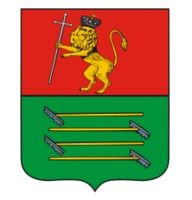Sudogda

The town of Sudogda is the administrative center of the Sudogda district of the Vladimir region, with a population of 10,673 people (2016). In is located 40 km southeast of Vladimir, on the river Sudogda (tributary of the Klyazma).
History
It is the river Sudogda that gave the name to the future town. The very name of the river, according to a recognized version, is of Finno-Ugric origin (five thousand years ago, the Finno-Ugric tribe of the Muroma settled between the rivers Sudogda and Oka). In the ancient Finno-Ugric language "Sutkeda / Sudgeda" meant "winding, tangled", which really reflects the peculiarities of the riverbed of Sudogda.
Information about Sudogda in historical studies is collected literally bit by bit. The first mention of Sudogda in written sources refers to 1552 (officially considered the year of its foundation). But, according to the transcript of a prikaz column of the noble family of the Karamyshevs (located in the Sudogda Museum of Local Lore), this mention was even two decades earlier – in 1529. Then, in accordance with the document, Grand Duke Vasily III granted the nobleman F.A. Karamyshev village Sudogda.
The mention of Sudogda as Yamskaya Sloboda in the middle of the 16th century, was justified, since it was located on a large postal route from Vladimir to Murom (now this highway P-72 Vladimir-Murom-Arzamas passes north of Sudogda).
At the beginning of the 17th century, the Sudogda Sloboda belonged to the Duma deacon Ivan Griazev. After his death in 1640 it was transferred by testament to the Moscow Simonov Monastery, in which fiefdom, apparently, it was before its abolition in 1771 according to the Catherine secularization reform.
In appliance with the provincial reform, in 1778, according to the decree of Catherine II, the Sudogodskaya Sloboda became the county town of the Vladimir governorate. On the rights of the town, in 1781 Sudogda received its coat of arms, in which, in the lower part, under the provincial lion, were depicted four silver rakes with golden handles symbolizing hay making, as the main occupation of local residents.
In 1788, a master plan for the development of Sudogda was adopted, according to which the city was divided into rectangular quarters. This intersection of streets at right angles has been preserved in the old part of the city until today.
In 1806, a strong fire destroyed almost all the buildings in the city, so some of them, for example, the Catherine's Cathedral, were repeatedly rebuilt. Most of the preserved buildings, reflecting the historical appearance of the city, date back to the second half of the 19th century. Several buildings in the old center of Sudogda are of interest at present: the house of the founder of the glass factory Evgraf Golubev and the wooden house of his mother, the building of the town fire depot and the real school (now school No.1), the house of the mayor with baroque motives, the building of the former town council (the administrations of Sudogda and the district are located here now, as well as the Sudogodsky Museum of Local Lore), the Alexander Nevsky Church and the restored Catherine's Cathedral. Almost unchanged, the complex of the town manor of the late 18th and early 19th centuries (now a private house) and the former parish school (built in 1903, now the post) have been preserved.
Economy
By the end of the 19th century, there are industrial enterprises appeared in the town, a flax-spinning factory and a bottle factory, which for a century determined its production orientation. In the 20th century the Bottle factory became the largest enterprise of Sudogda – the plant "Red Chemist", which produced glass containers, and since the 1960s – fiberglass. After the reorganization of the last decades, these traditions are continued by a number of autonomous enterprises, for example, "Sudogda Glass Plastic", "RPA Glass Plastic". In addition, textile factories (linen fabrics and yarns) and a large dairy plant operate in Sudogda, which diverse products are very valued not only in the Vladimir region, but in Moscow and Nizhny Novgorod.
Sights
The surroundings of Sudogda are of great interest for tourists. That is, first of all, the estate of V.S. Khrapovitsky in Muromtsevo (three kilometers from Sudogda), a remarkable palace and park complex of the turn of the 19th-20th centuries. Until recently, the homestead was in a deplorable state. Currently, work is underway to restore it.
Places near the Holy Transfiguration Monastery in Spas-Kupalishche (20 km from Sudogda) are filled with amazing natural and spiritual beauty.
Not far from Sudogda there is a natural landmark, well-known among people who are keen on mountaineering – Dyukinsky quarries. Here, training and climbing competitions are held on cliffs up to a few tens of meters high.
Sudogda as the center of hockey
Sudogda is rightfully considered the center of youth hockey in the Vladimir region. Since 2002, the All-Russian tournament of young hockey players "Golden Puck" named after the three-time Olympic champion Alexander Ragulin has been held here. In September 2016, this tournament was awarded the 1st place in the competition of the National Award in the field of event tourism "Russian Event Awards" (nomination "The best tourist event in the field of sports", Central Federal District).
 Tourism portal of the
Tourism portal of the